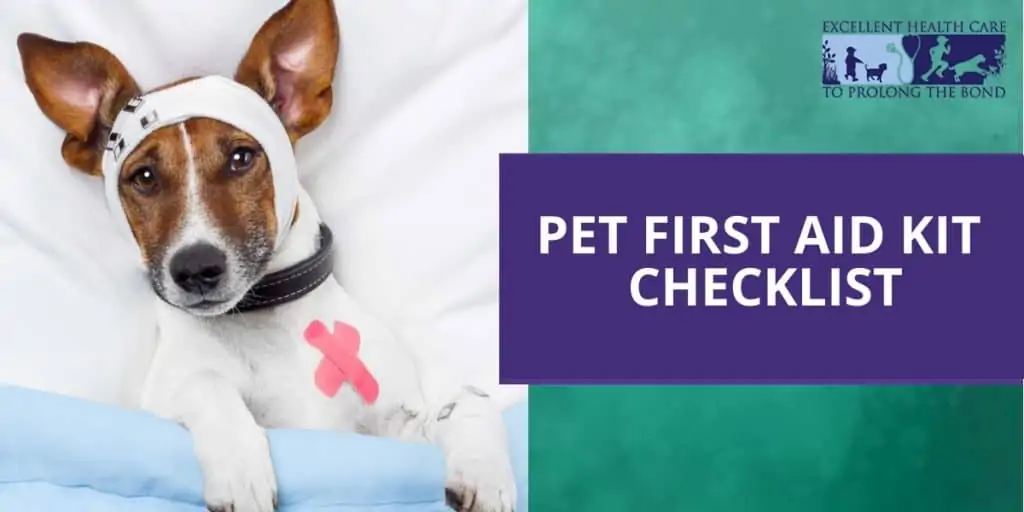
Caring for your pet is something that you need to take pretty seriously. In the case of minor accidents; you might not have to take your pet to a vet, provided, you have a pet first aid kit. On the flip side, if the accident is major, a pet first aid kit can also be an inevitable factor in sustaining your pet’s life until he reaches the vet’s table.
In the case of pet accidents, as a pet parent, your priority should be to keep your pet from panicking and to alleviate his discomfort. A complete first aid kit and a working knowledge of the same can help you to achieve the same.
Plan yourself a pet first aid kit by including the following accessories:
Emergency contact details: Store the contact details of a number of local veterinary clinics to get professional advice, in the case of an emergency. You can even try and build rapport with your local veterinarian to get his/her personal number.
Scissors or a small trimmer: a small trimmer can be used to shave fur around the wounded area and the scissors can be used to cut bandages and well as the fur in the wounded area.
Eyedropper: can come in handy to apply liquid medicine to the wounded area or to clean the wound.
Tweezers: Tweezers can be used to remove or pull out foreign objects stuck in the wounds.
Disposable gloves: disposable gloves can alleviate the risks of infections to your pet.
Hydrogen peroxide solution: it the best reagent that can be used to clean the wound. Hydrogen peroxide can also be used to induce vomiting in cases where your dog has ingested something toxic. However, it is important that you do not use it without the supervision of a veterinarian.
Gauze rolls and pads: The gauze pads can be used to clean the wound while the gauze rolls can be used to wrap it.
Lightweight splint: lightweight splint can be used as a support to any fractured body part, especially the limb while transporting the injured pet.
A cold pack: a cold pack can be used to provide instant relief to pain or to reduce swelling.
Muzzle: pets can turn out to be unpredictable when they are injured and in pain. This is why most of the dog parents, use a muzzle as a precaution while they give first aid to their injured pet and transport him to a vet.
Antibiotic Ointment: any pet who loves playing outdoors is vulnerable to minor scratches of cuts. Antibiotic ointments can be used to prevent infections and relieve pain during such circumstances.
Grooming wipes: grooming wipes can be handy, especially when you take your dog outdoors. For instance, you can use them to clean your dog’s paws before they are allowed into the car after a long run in the park.
Collapsible water/food bowls: These might not sound like an emergency item, but are pretty handy when traveling with your dog. During those long hikes or cross-country trips, imagine the struggle of keeping your dog hydrated, without no feeding bowls or containers.
Poop bags: dogs have the tendency to taste and tell and their curiosity can make them ingest anything, especially when being outdoors. Such situations can make him sick and go through more poop bags.
Flashlight: you might need some extra lighting just to pull out a splinter in your dog’s paws or to ensure that his wound is clean. These days you can find pocket flashlights with ease.
A blanket: a blanket can be the ideal choice to contain the pet while he is transported to the vet. It can help you to keep your pet warm and even give you greater control over him.
A pet first aid guidebook: This is an inevitable component for your pet first aid kit. You might not always have the power or electronic equipment around you when there is an emergency. So having a hardcopy of some first aid tips can come in handy.
An injured pet can turn out to be aggressive; make sure to vaccinate your pet for rabies. Try to stabilize an injured pet prior to transporting him to the veterinarian. To prevent bleeding, apply direct pressure to the wound.
Always keep in mind that your pet first aid kit can never substitute a professional veterinarian’s work. Even if the injury seems minor, you need to keep a close eye on your pet for a couple of days and get him examined by a professional veterinarian to alleviate any infections.
